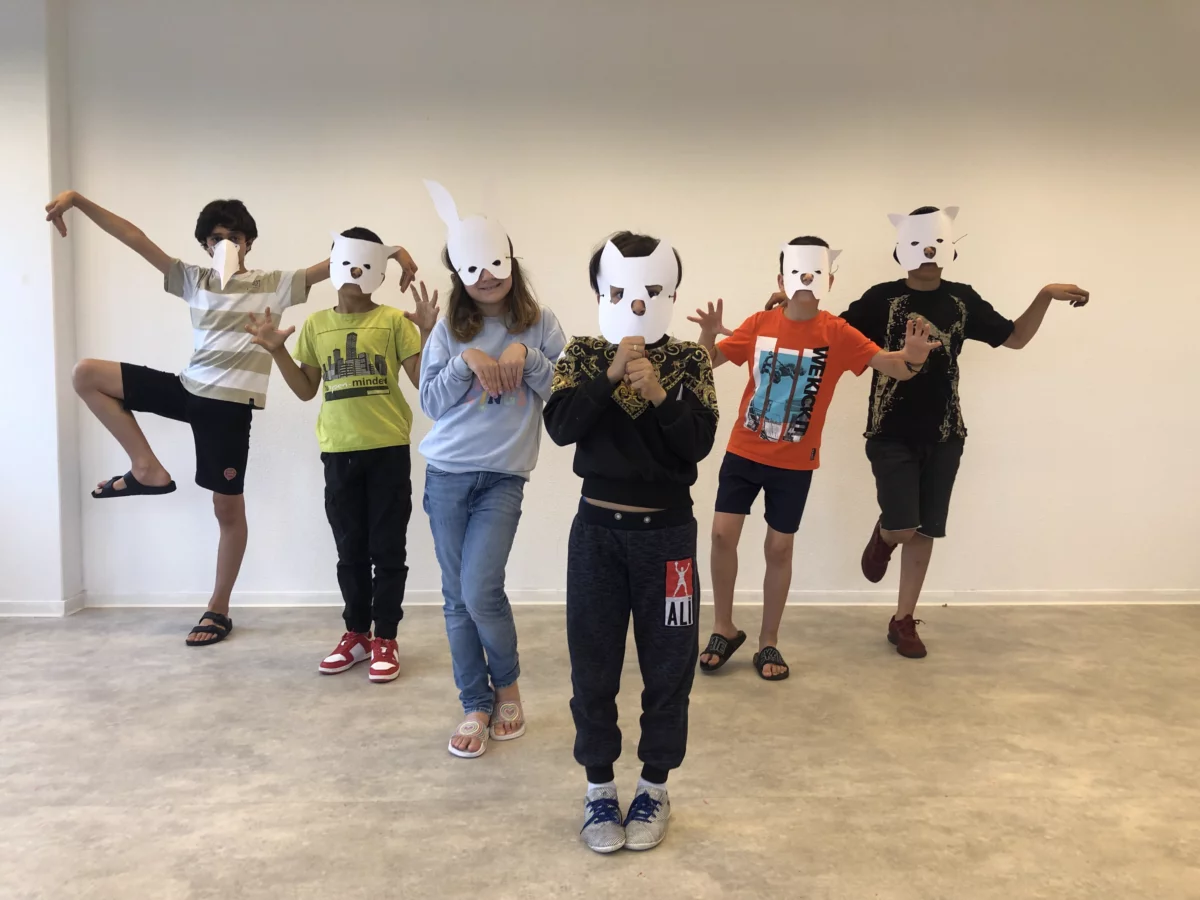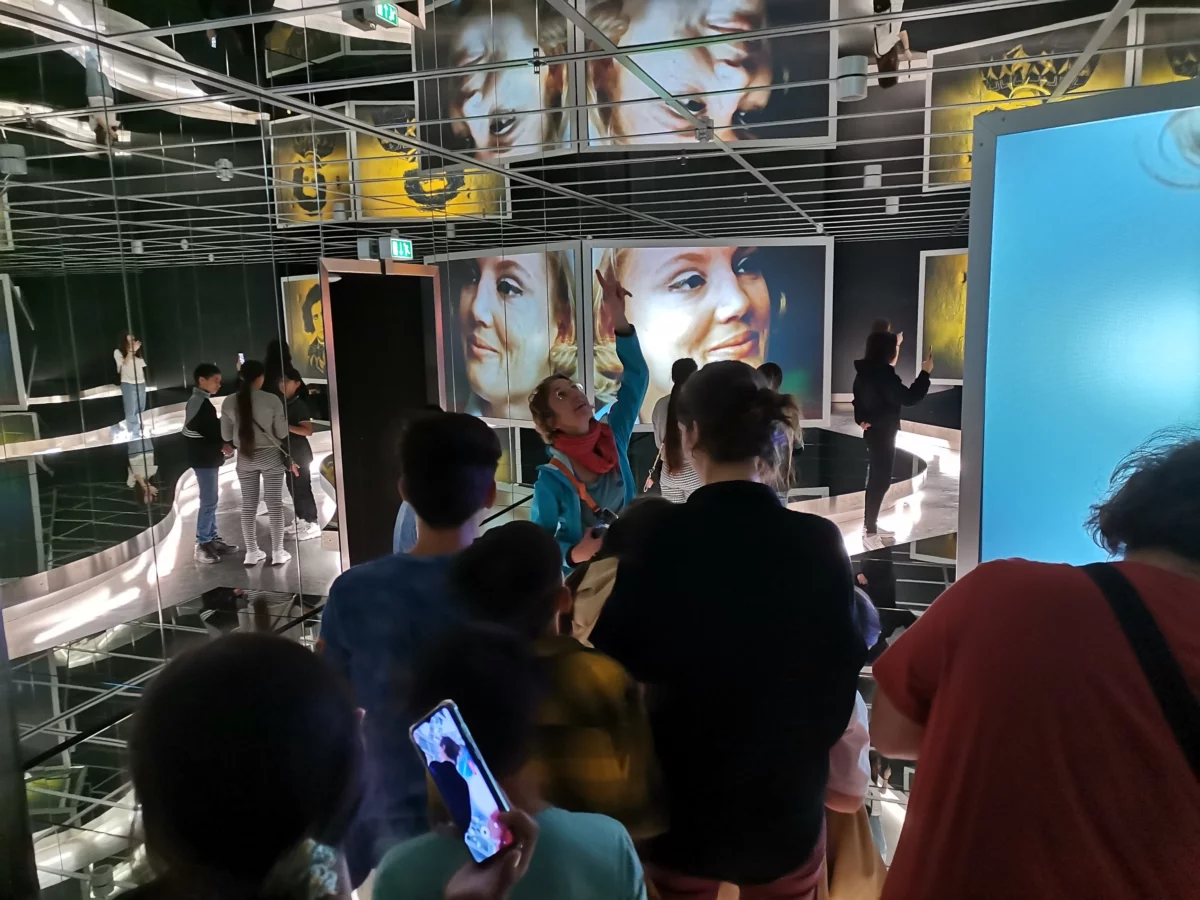Art knows no language barriers
By David P. Fischer
In the project "Think common – play common" – supported by the Fonds Darstellende Künste as part of the GLOBAL VILLAGE KIDS program – child refugees from a range of countries came together. David P. Fischer, a team member of Stadt|Raum|Museum e.V, reports.
In an increasingly digital world, the sheer amount of information that children and young people are exposed to nowadays seems like an impenetrable thicket in the media landscape’s forest.
The aim of the "Think common – play common" project was to embark on a journey together through this forest. Over a period of three months, the Stadt|Raum|Museum e.V. association carried out the project in the refugee home run by the Protestant Youth and Welfare Foundation (EJF) in the Berlin district of Marzahn-Hellersdorf, forming an education partnership with the EJF and the NESWA e.V. association. The Stadt|Raum|Museum e.V. association has been implementing participatory cultural projects in Berlin and other locations since 2017. The focus is on the self-empowerment and self-efficacy of the children and young people who take part.
The project reached a total of around 30 children and young people living in the home. The participants, aged between 8 and 10 on average, came from a wide variety of backgrounds and countries of origin, including Syria, Belarus, Kurdistan, Georgia, Macedonia, Moldova and Afghanistan.
The aim was to examine their own origins and living environment together and identify where they had things in common in terms of wishes, ideas and dreams. While the participants were initially invited to immerse themselves in their own fantasies and express them through simple theatrical interaction, dance and performance, various forms and possibilities were introduced and tried out. During pantomime exercises in the initial phase of the project, for example, one thing quickly became clear: Regardless of the different backgrounds of the individual participants, acting and creative expression know no language barriers.
As the project progressed, the multimedia world increasingly became the focus of the project. Rooms in the refugee home were turned into a fictitious news studio and stories were developed together from the dreams and wishes of the children and young people, which became positive news featured in their own news program. The stories came to life here, with the participants as the authors, actors and directors of their own visionary worlds.
 © privat
© privat
But this project was more than just an artistic production. Good news was deliberately made the focus of the news stories they produced in order to make it easier for the participants – all of whom are children and young people with experience as refugees – to deal with digital information.
In the course of the work, it was repeatedly made clear that the children and young people are already media makers themselves in real life and actively contribute to the dissemination of information and opinions. Almost every child today owns a smartphone and uses social media platforms such as TikTok or Instagram to share their own "information" and consume that of others. The diversity of media and dealing with fake news became key topics, while questions about opinion manipulation and the verifiability of information were also addressed.
Practical exercises in front of and behind the camera helped the participants make their own productions in the digital world more professional in the future and find new ways of expressing themselves through acting. Be that by working with their own voice, emphasizing facial expressions and gestures or consciously staging image compositions.
The video production was deliberately spartan. Based on the fact that children and young people can make media today with just their smartphones, the use of expensive equipment was avoided as much as possible.
In front of the camera, the ideas collected by the participants were transferred to the animal world, which also gave the children and young people the opportunity to immerse themselves completely in a different role. The masks used were designed artistically together and the design of any storyboards for the previously developed stories was just as creative. The required backgrounds were integrated into the show using a green screen.
The participants were also able to gain an insight into the history and functionality of film during a visit to the Deutsche Kinematik Museum at Berlin's Potsdamer Platz and a visit to the cinema.
 © privat
© privat
Finally, the highlight for the participants was the final presentation with their friends and parents. Here, the children and young people experienced pride and recognition from their families for their involvement in the project and the results achieved. The screening of the resulting film was also repeated at a subsequent event at the refugee home, making the work accessible to an even wider audience.
With GLOBAL VILLAGE KIDS, the Fonds Darstellende Künste supports projects at the interface of performing arts and cultural education in rural and digital spaces, financed by the Federal Ministry of Education and Research as part of "Kultur macht stark. Bündnisse für Bildung."
The “Think common – play common” project took place in Berlin in summer 2023 with children and young people aged between 8 and 10.